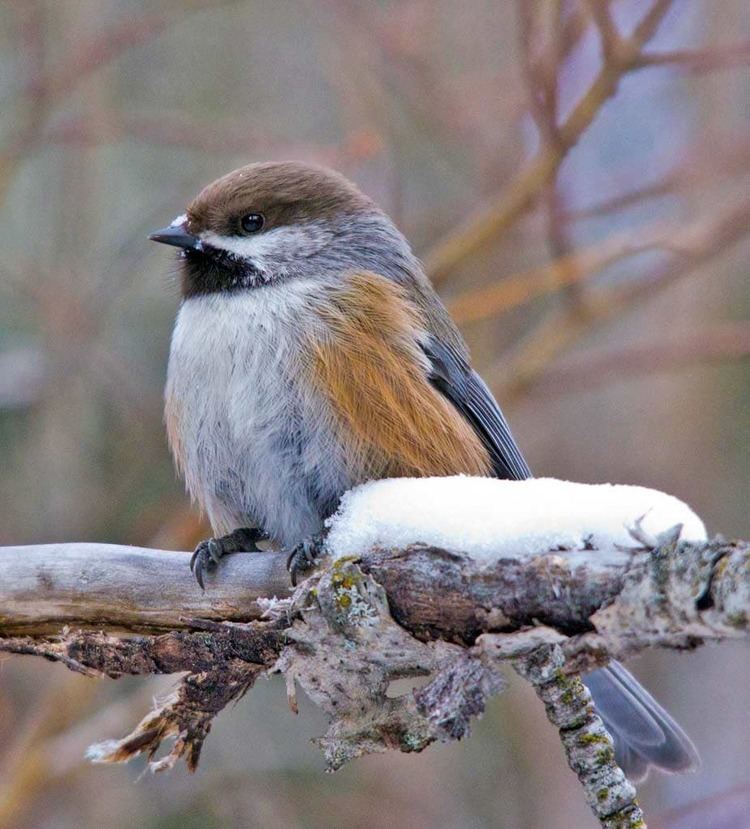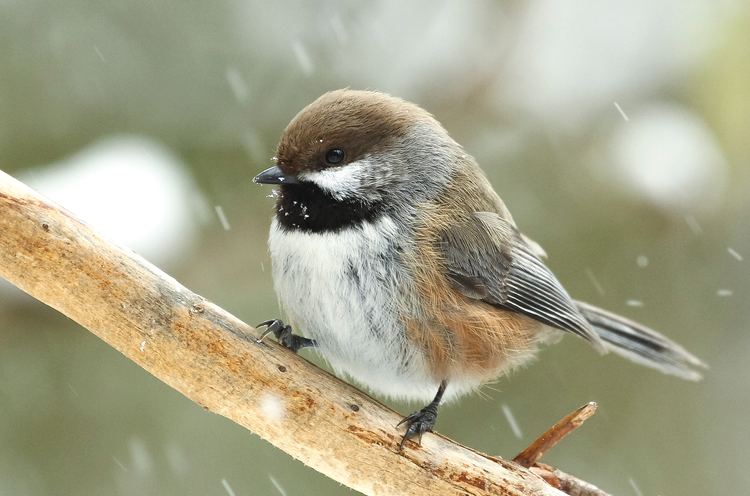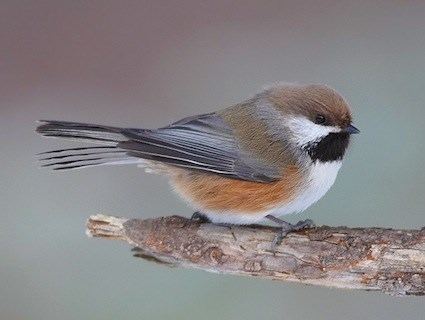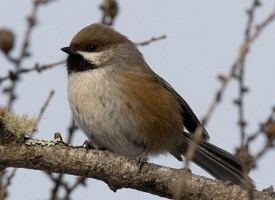Order Passeriformes Higher classification Poecile | Phylum Chordata Family Paridae Scientific name Poecile hudsonicus Rank Species | |
 | ||
Similar Bird, Black‑backed woodpecker, Poecile, Grey jay, Black‑capped chickadee | ||
The boreal chickadee (Poecile hudsonicus) is a small passerine bird in the tit family Paridae. It is found in the boreal forests of Canada and the northern United States.
Contents
A boreal chickadee calling
Description

Adults are 12.5–14.5 cm (4.9–5.7 in) long with a weight of 7–12.4 g (0.25–0.44 oz). They have grey-brown upperparts with a brown cap and greyish wings and tail; their face is mainly grey with white on the sides. Their underparts are white with brown on the flanks and a black throat. They have a short dark bill, short wings and a long notched tail.
The call is a husky tsik-a-dee-dee, a variant on the call which gives chickadees their name.
Behavior

Their breeding habitat is coniferous woods in Canada, Alaska, and the northern edges of the lower forty-eight United States. They remain within their breeding range throughout the year, but sometimes move south in winter. Winter movements south of their range, however, appear to have become increasingly rare. They nest in a hole in a tree; the pair excavates the nest, using a natural cavity or sometimes an old woodpecker nest. Five to seven eggs are laid, white with fine reddish-brown spotting. The pair remains together year round and may mate for life.

These birds forage on conifer branches or probe into the bark, eating mainly insects and seeds, which may be stored for later use. They often forage in small flocks including other small birds, especially in winter.
Taxonomy
Often, it is still placed in the genus Parus with most other tits, but mtDNA cytochrome b sequence data and morphology suggest that separating Poecile more adequately expresses these birds' relationships. The American Ornithologists' Union has been treating Poecile as a distinct genus for some time already. The genus name Poecile has often been treated as feminine (giving the species name ending hudsonica); however, this was not specified by the original genus author Johann Jakob Kaup, and under the ICZN the genus name must therefore be treated by default as masculine, giving the name ending hudsonicus.
